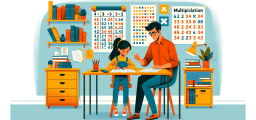How to Divide by Zero?
The word division means to divide something into equal parts or groups so that it is divided equally among all. In the following guide, you will learn more about division by zero.
[include_netrun_products_block from-products="product/6-south-carolina-sc-ready-grade-3-math-practice-tests/" product-list-class="bundle-products float-left" product-item-class="float-left" product-item-image-container-class="p-0 float-left" product-item-image-container-size="col-2" product-item-image-container-custom-style="" product-item-container-size="" product-item-add-to-cart-class="btn-accent btn-purchase-ajax" product-item-button-custom-url="{url}/?ajax-add-to-cart={id}" product-item-button-custom-url-if-not-salable="{productUrl} product-item-container-class="" product-item-element-order="image,title,purchase,price" product-item-title-size="" product-item-title-wrapper-size="col-10" product-item-title-tag="h3" product-item-title-class="mt-0" product-item-title-wrapper-class="float-left pr-0" product-item-price-size="" product-item-purchase-size="" product-item-purchase-wrapper-size="" product-item-price-wrapper-class="pr-0 float-left" product-item-price-wrapper-size="col-10" product-item-read-more-text="" product-item-add-to-cart-text="" product-item-add-to-cart-custom-attribute="title='Purchase this book with single click'" product-item-thumbnail-size="290-380" show-details="false" show-excerpt="false" paginate="false" lazy-load="true"]

Division by zero means that when any non-zero, positive, or negative number is divided by zero the result is always undefined.
Related Topics
A step-by-step guide to division by zero
Division by zero is considered as undefined where zero is the denominator or the division and is expressed as \(\frac{a}{0}\), \(a\) being a number or numerator or dividend. Dividing zero with any number will always give us a zero no matter with multiplication or division. Since multiplication and division go hand in hand, division by zero can also mean multiplication by zero. For example, \(\frac{7}{0} = x\) or \(0 × x = 5\). Here \(x\) has no value or number to complete the equation. Therefore, division by zero of any number is not defined.
One divided by zero
A division by zero is also considered undefined. According to mathematicians, any non-zero number, positive or negative divided by zero, is not defined because there is no value.
For example, let’s try to define \(\frac{1}{0}\). If we divide a non-zero number by a small positive number, we get a value. The small positive number is close to zero but not zero.
\(\frac{1}{0.1}= 10, \frac{1}{0.01} = 100, \frac{1}{0.000001} = 1,000,000\)
Hence, as we divide one by smaller and smaller positive numbers we get larger and larger positive numbers. Therefore, \(\frac{1}{0} = + infinity\).
When we divide negative numbers that are close to zero, we get:
\(\frac{1}{-0.1} = -10, \frac{1}{-0.01} = -100, \frac{1}{-0.000001} = -1,000,000\)
One divided by a negative number closer to zero brings in a different result that is closer to negative infinity. Therefore, \(\frac{1}{0} = -infinity\). Therefore, one divided by zero has no answer which results in being undefined.
Important notes about division and zero
Below are some facts about division and zero:
- Any number divided by \(1\) (the quotient equals the dividend), answers the same as the dividend. In other words, 1 is the divisor and the quotient will be equal to the dividend. For examples: \(23 ÷ 1 = 23\).
- A number cannot be divided by \(0\) and therefore the result is not defined. Example: \(60 ÷ 0 =\) undefined (but \(0 ÷ 60 = 0\)).
- When the dividend equals the divisor, which means the same numbers but not \(0\), then the answer is always \(1\). For examples: \(46 ÷ 46 = 1\).
- Zero is a real number, an integer, a rational number, and a whole number.
- Zero is always neutral i.e. zero is never written like \(+0\) or \(-0\).
- The power of any number that is raised by zero is always one.
Exercises for Division by Zero
Find each quotient.
- \(\color{blue}{\frac{29}{0}}\)
- \(\color{blue}{\frac{0}{125}}\)
- \(\color{blue}{\frac{867}{0}}\)
- \(\color{blue}{undefined}\)
- \(\color{blue}{0}\)
- \(\color{blue}{undefined}\)
Related to This Article
More math articles
- How to Change Base Formula for Logarithms?
- Best Calculators for High School Algebra II
- How to do the Decomposition of Fractions
- Repeating Patterns
- What Happens If You Fail the STAAR Test in High School?
- The Ultimate Keystone Algebra 1 Course (+FREE Worksheets)
- Finding Derivatives Made Easy! Product Rule of Differentiation
- Discover the Solutions: “ASTB Math for Beginners” Complete Solution Manual
- Full-Length GRE Math Practice Test
- Supermarket Sweep: How to Choose the Better Coupon in Aisle 7!





































What people say about "How to Divide by Zero? - Effortless Math: We Help Students Learn to LOVE Mathematics"?
No one replied yet.